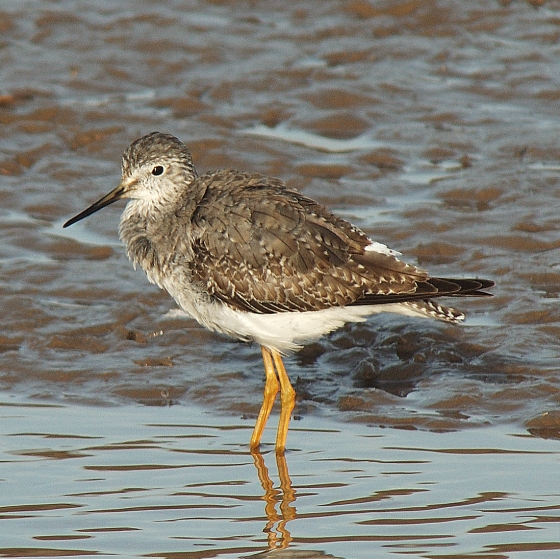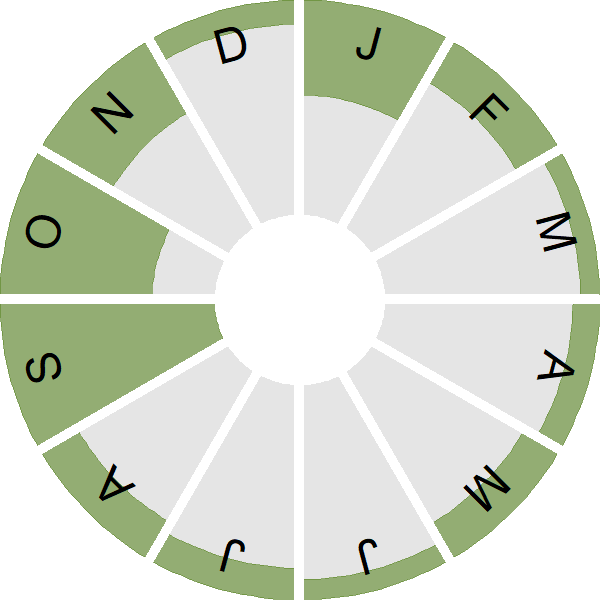Lesser Yellowlegs

Introduction
Similar in size to a Redshank but more slender and graceful, there are a handful of records of this visitor from North America every year, mostly from August to October.
Both male and female Lesser Yellowlegs provide parental care to their young but the female tends to depart from the breeding area before the chicks can fly, leaving the male to defend the young until fledging.

Key Stats
Status and Trends
Conservation Status
Population Change
Population trends of this scarce species are not routinely monitored.
Distribution
This species is a rare vagrant and was recorded during Bird Atlas 2007–11 as shown on the map.
Occupied 10-km squares in UK
2007/08–10/11
or view it on Bird Atlas Mapstore.
2008–11
or view it on Bird Atlas Mapstore.
Distribution Change
This vagrant is too rarely reported to map distribution change.
Seasonality
Lesser Yellowlegs is a rare vagrant recorded sporadically throughout the year, though with slightly more regular occurrence in autumn. Some birds overwinter.
Weekly pattern of occurrence
The graph shows when the species is present in the UK, with taller bars indicating a higher likelihood of encountering the species in appropriate regions and habitats.

Movement
Britain & Ireland movement
Biology
Survival and Longevity
Survival is shown as the proportion of birds surviving from one year to the next and is derived from bird ringing data. It can also be used to estimate how long birds typically live.
Classification, names and codes
Classification and Codes
- Order: Charadriiformes
- Family: Scolopacidae
- Scientific name: Tringa flavipes
- Authority: JF Gmelin, 1789
- BTO 2-letter code: LY
- BTO 5-letter code: LESYE
- Euring code number: 5510
Alternate species names
- Catalan: gamba groga petita
- Czech: vodouš žlutonohý
- Danish: Lille Gulben
- Dutch: Kleine Geelpootruiter
- Estonian: kollajalg-tilder
- Finnish: keltajalkaviklo
- French: Petit Chevalier
- German: Kleiner Gelbschenkel
- Hungarian: sárgalábú cankó
- Icelandic: Hrísastelkur
- Irish: Mionladhrán Buí
- Italian: Totano zampegialle minore
- Latvian: mazais dzeltenstilbis
- Lithuanian: geltonkojis tulikas
- Norwegian: Gulbeinsnipe
- Polish: brodziec zóltonogi
- Portuguese: maçarico-de-perna-amarela / perna-amarela-pequeno
- Slovak: kalužiak žltonohý
- Slovenian: mali rumenonogi martinec
- Spanish: Archibebe patigualdo chico
- Swedish: mindre gulbena
- Welsh: Melyngoes Bach
More Evidence
More evidence from Conservation Evidence.com
Partners
Citing BirdFacts
If you wish to cite particular content in this page (e.g. a specific value) it is best to use the original sources as linked in the page. For a more general citation of the whole page please use: BTO (20XX) BirdFacts Species: profiles of birds occurring in the United Kingdom. BTO, Thetford (www.bto.org/birdfacts, accessed on xx/xx/xxxx).

